
Roger William Corman is an American film director, producer, and actor. Known under various monikers such as "The Pope of Pop Cinema", "The Spiritual Godfather of the New Hollywood", and "The King of Cult", he is known as a trailblazer in the world of independent film. Many of Corman's films are low-budget cult films including some which are adapted from the tales of Edgar Allan Poe.

Attack of the 50 Foot Woman is a 1958 independently made American science fiction horror film directed by Nathan H. Juran and starring Allison Hayes, William Hudson and Yvette Vickers. It was produced by Bernard Woolner. The screenplay was written by Mark Hanna, and the original music score was composed by Ronald Stein. The film was distributed in the United States by Allied Artists as a double feature with War of the Satellites.

It Came from Beneath the Sea is a 1955 American science fiction monster horror film from Columbia Pictures, produced by Sam Katzman and Charles Schneer, directed by Robert Gordon, that stars Kenneth Tobey, Faith Domergue, and Donald Curtis. The screenplay by George Worthing Yates was designed to showcase the stop motion animation special effects of Ray Harryhausen.

It Conquered the World is an independently made 1956 American black-and-white science fiction film, produced and directed by Roger Corman, starring Peter Graves, Lee Van Cleef, Beverly Garland, and Sally Fraser. It Conquered the World was released theatrically by American International Pictures as a double feature with The She-Creature.
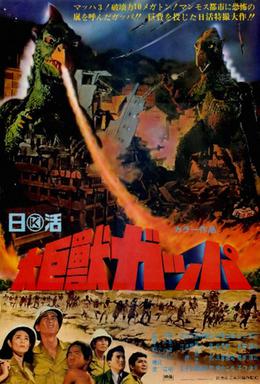
Gappa is a 1967 Japanese kaiju film directed by Haruyasu Noguchi. The film is about a group of Japanese reporters who discover an infant monster called a Gappa on Obelisk Island. The reporters cage the creature and take it to Japan where it becomes a media attraction. This angers the natives of the island and Gappa's full-grown parents, who head toward Japan to find their child. Its plot virtually duplicates that of the 1961 British film Gorgo.
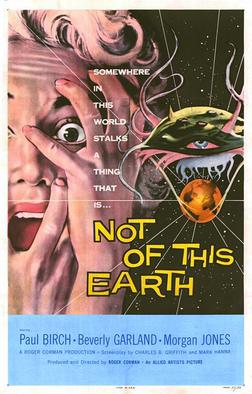
Not of This Earth is an independently made 1957 American black-and-white science fiction film produced and directed by Roger Corman, that stars Paul Birch, Beverly Garland, Morgan Jones, William Roerick, and Anna Lee Carroll. The film was written by Charles B. Griffith and Mark Hanna and was distributed by Allied Artists Pictures Corporation as a double feature with Attack of the Crab Monsters. Its theatrical release had a running time of 67 minutes, that was expanded to 70 minutes in 1962 for TV syndication.

The Undead is a 1957 horror film directed by Roger Corman and starring Pamela Duncan, Allison Hayes, Richard Garland and Val Dufour. It also featured Corman regulars Richard Devon, Dick Miller, Mel Welles and Bruno VeSota. The authors' original working title was The Trance of Diana Love. The film follows the story of a prostitute, Diana Love (Duncan), who is put into a hypnotic trance by psychic Quintus (Dufour), thus causing her to regress to a previous life. Hayes later starred in Attack of the 50 Foot Woman (1958). The film was released on March 15, 1957 by American International Pictures as a double feature with Voodoo Woman.

Chopping Mall is a 1986 American techno-horror film co-written and directed by Jim Wynorski, produced by Julie Corman, and starring Kelli Maroney, Tony O'Dell, John Terlesky, Russell Todd, Paul Bartel, Mary Woronov, and Barbara Crampton. It focuses on three high-tech security robots turning maniacal and killing teenage employees inside a shopping mall after dark.

Creature from the Haunted Sea is a 1961 horror comedy movie directed by Roger Corman. Written by Charles B. Griffith, the movie is a parody of spy, gangster, and monster movies, concerning a secret agent, XK150, who uses the name "Sparks Moran" in order to infiltrate a criminal gang commanded by Renzo Capetto, who is trying to transport an exiled Cuban general with an entourage and a large portion of the Cuban treasury out of Cuba. Filmgroup released the movie as a double feature with Devil's Partner.

Beast from Haunted Cave is a 1959 horror/heist film directed by Monte Hellman and starring Michael Forest, Frank Wolff and Richard Sinatra. It was produced by Gene Corman, Roger Corman's brother. Filmed in South Dakota at the same time as Ski Troop Attack, it tells the story of bank robbers fleeing in the snow who run afoul of a giant spider-like monster that feeds on humans. The film was released as a double feature with The Wasp Woman (1959).

Charles Byron Griffith was an American screenwriter, actor, and film director. He was the son of Donna Dameral, radio star of Myrt and Marge, along with Charles' grandmother, Myrtle Vail, and was best known for writing Roger Corman productions such as A Bucket of Blood (1959), The Little Shop of Horrors (1960), and Death Race 2000 (1975).

Gunslinger is a 1956 American Western film directed by Roger Corman and starring John Ireland, Beverly Garland and Allison Hayes. The screenplay was written by Mark Hanna and Charles B. Griffith.
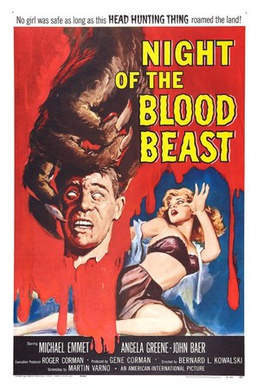
Night of the Blood Beast is a 1958 American science-fiction horror film about a team of scientists who are stalked by an alien creature, which implants its embryos in an astronaut's body during a space flight. Produced by exploitation filmmaker Roger Corman and his brother Gene, it was one of the first films directed by Bernard L. Kowalski and was written by first-time screenwriter Martin Varno, who was 21 years old. It starred several actors who had regularly worked with Roger Corman, including Michael Emmet, Ed Nelson, Steve Dunlap, Georgianna Carter and Tyler McVey. The film was theatrically released in December 1958 as a double feature with She Gods of Shark Reef.

Watchers II is the 1990 sequel to the 1988 horror film Watchers. Starring Marc Singer and Tracy Scoggins, the film is loosely based on the 1987 novel Watchers by Dean Koontz. It was released on August 16, 1990.

Monster from the Ocean Floor is an American 1954 science fiction film about a sea monster that terrorizes a Mexican cove. The film was directed by Wyott Ordung and starred Anne Kimbell and Stuart Wade.

Sweet Kill is a 1973 B-movie written and directed by future Academy Award winner Curtis Hanson. The film was Hanson's directorial debut and was executive-produced by Roger Corman. It stars 1950s heartthrob Tab Hunter and was the last film of actress Isabel Jewell.
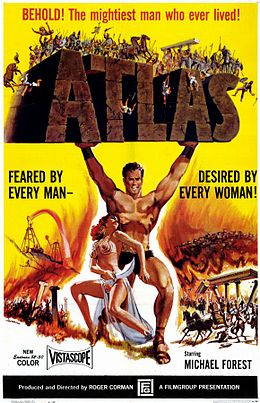
Atlas is a 1961 peplum film directed by Roger Corman and starring Michael Forest and Frank Wolff. It was filmed in Greece. Corman called it "my last attempt to do a big picture on a low budget." Writer Charles B. Griffith said "Atlas was a mess. It was a doomed project. "

Dinocroc vs. Supergator is an 2010 American science fiction horror television film that premiered on Syfy on June 26, 2010. This is one of David Carradine's final performances. The film was released on DVD and Blu-ray on July 12, 2011; it was supposed to be a parody of King Kong vs. Godzilla.
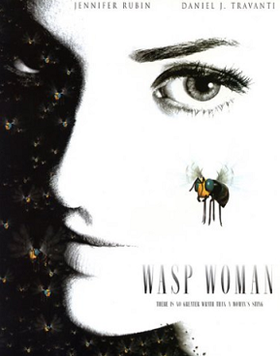
The Wasp Woman is a 1995 television body horror film directed by Jim Wynorski and starring Jennifer Rubin, and Doug Wert. It is a remake of the 1959 film of the same name, which was produced and directed by Roger Corman. The film first aired on the Showtime Network in 1995.

Dinosaur Island is a 1994 B-movie directed by Fred Olen Ray and Jim Wynorski. Wynorski called it "a very 1950's type of picture, like The Lost Continent except that we're going to have better dinosaurs and more girls."




















